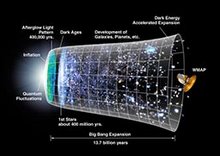
Betelgeuse is the first star (other than Sun) to be spotted by Hubble Telescope. The image was taken in ultraviolet light with the Faint Object Camera on March 3, 1995.
This is also called Alpha Orionis, or Betelgeuse, it is a red supergiant star marking the shoulder of the winter constellation Orion the Hunter (diagram at right).
Other names for this star are Betelguex, Betelgeuze, Beteiguex, or Al Mankib. Betelguese and the related names derive from the Arabic phrase Ibt al Jauzah meaning "The Armpit of the Central One".
The Hubble image reveals a huge ultraviolet atmosphere with a mysterious hot spot on the stellar behemoth's surface. The enormous bright spot, more than ten times the diameter of Earth, is at least 2,000 Kelvin degrees hotter than the surface of the star.
The image suggests that a totally new physical phenomenon may be affecting the atmospheres of some stars. Follow-up observations will be needed to help astronomers understand whether the spot is linked to oscillations previously detected in the giant star, or whether it moves systematically across the star's surface under the grip of powerful magnetic fields.
Data- RA 05 55 10.3
- Distance (Light Years) 427 ± 92
- Dec +07 24 25
- V 0.50
- B-V +1.85
- Spectral Type M1-2Ia-Iab
There are many stars that are as massive as Betelgeuse is now, and probably many that are as massive as Betelgeuse was when it was on the main sequence. Of the 100,000,000,000 (100 billion=10^11) or so stars in our galaxy , it is estimated that approximately 1% have main sequence masses greater than 30 times that of the Sun, which is where Betelgeuse may have started out. A very crude estimate is that such stars spend 1% of their lives as supergiants, which would suggest 10,000,000 stars similar to Betelgeuse in our galaxy.
In spite of this fact, there are very few stars which are visible to the naked eye which are as large as Betelgeuse. This is simply a consequence of the fact that we can distinguish bright stars in only a small fraction of the galaxy. Another one is Mira, in the constellation Cetus. Mira is probably larger than Betelgeuse, so large that it is thought that the outer layers of the star are barely held together by gravity. Mira is known to pulsate and eject its outer layers, probably in large part because of its weak gravity. Possibly the most massive known star is eta carina, which may have been 150 times as massive as the Sun when it first formed, and may be 50 - 60 times as massive as the Sun currently. In the 1830s eta carina underwent a tremendous outburst during which it became a brilliant naked eye object and ejected an amount of gas with mass approximately equal to the mass of the Sun.
It is likely that the minimum main sequence mass for a star which will eventually make a black hole is 8 - 10 times the mass of our Sun. This is quite a bit less than Betelgeuse had when it was on the main sequence, and there are many such stars in our galaxy.
Resources:1) Tim Kallman for Ask an Astrophysicist
2) astro.uiuc.edu
3) http://hubblesite.org
4) domofthesky.com
5) Publilshed image of Betelgeuse by NASA

No comments:
Post a Comment